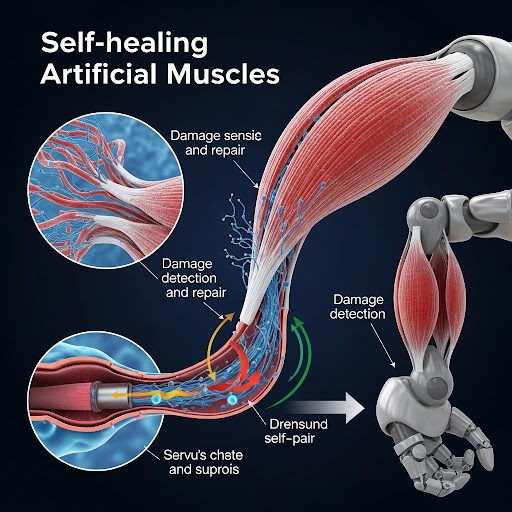Researchers at the University of Nebraska-Lincoln have developed revolutionary artificial muscles capable of autonomously detecting damage and self-repairing without external intervention — a technology that could transform soft robotics.

G. Ostrov
A team of engineers at the University of Nebraska-Lincoln has presented breakthrough technology in soft robotics — self-healing artificial muscles. This development mimics the ability of animals and plants to detect and self-heal injuries, addressing a longstanding problem in synthetic systems.
Three-Layer Architecture
The key feature of the new system is a multi-layer architecture presented at the recent IEEE International Conference on Robotics and Automation in Atlanta, Georgia. The artificial muscle consists of three layers:
- Bottom layer — damage detection layer, which is a soft electronic skin composed of liquid metal microdroplets embedded in a silicone elastomer
- Middle layer — stiff thermoplastic elastomer that acts as the self-healing component
- Top layer — actuation layer that contracts and expands with water pressure variation
Working Principle
The self-repair system functions through a network of monitoring currents flowing across the 'skin' of the design. Damage is sensed as disruptions to the electrical network. The genius of the solution is that the same network delivers heat to damaged areas, melting the thermoplastic layer to seal ruptures.
To ensure multiple repairs, researchers developed a system to reset the skin layer's electrical network using electromigration effects — a process in which electrical current causes metal atoms to migrate. Without this system, the self-healing mechanism could only complete one cycle of damage and repair.
Applications
The first applications researchers are considering include agricultural robots that get damaged by twigs or thorns. However, the team also sees possibilities for using this technology in wearable health monitoring devices and broader consumer electronics applications.
This technology represents a significant step forward in biomimetic robotics, opening new possibilities for creating more resilient and autonomous robotic systems.
Official University of Nebraska-Lincoln website: https://www.unl.edu/
If you have any issues, contact us, we'll help you quickly and professionally!




